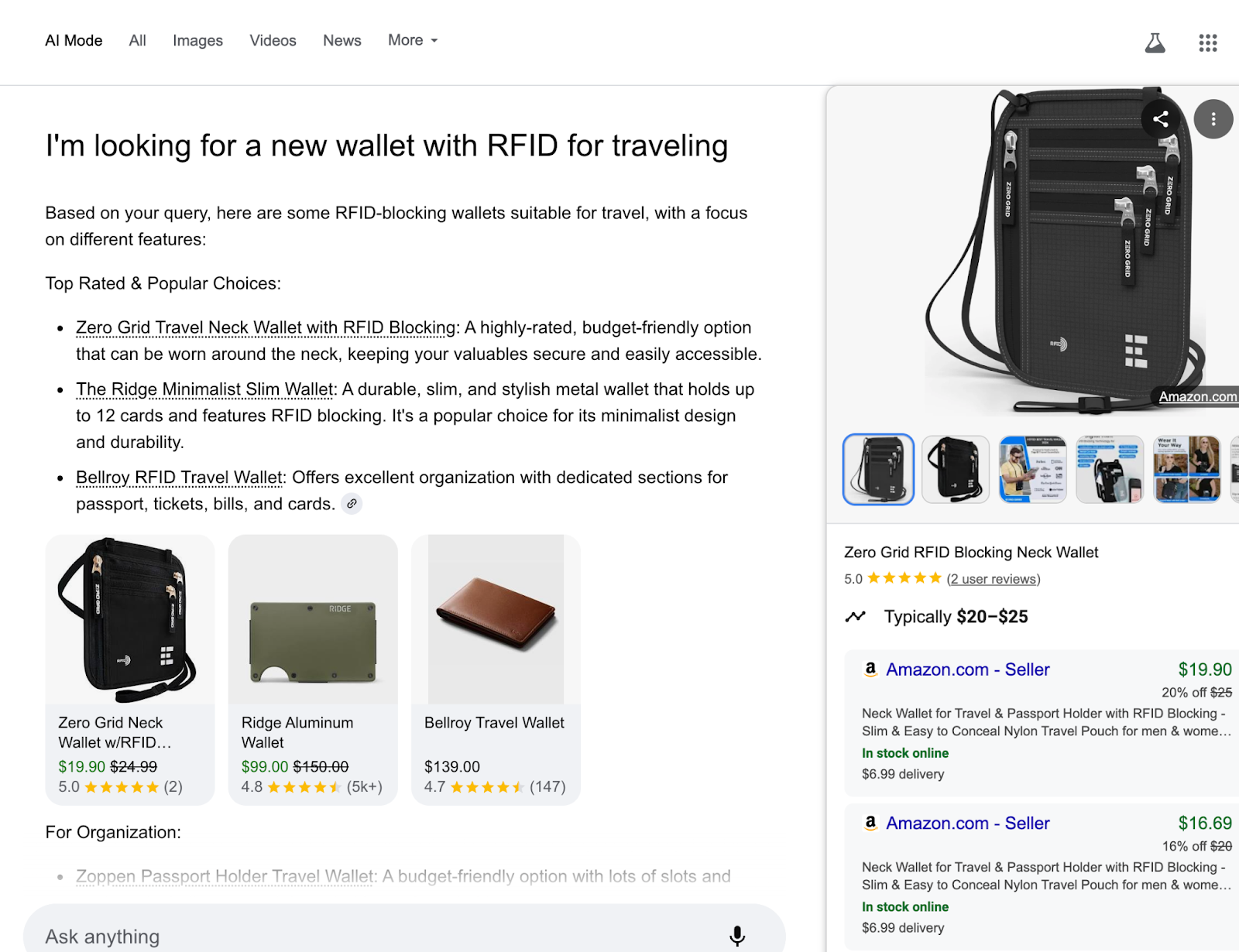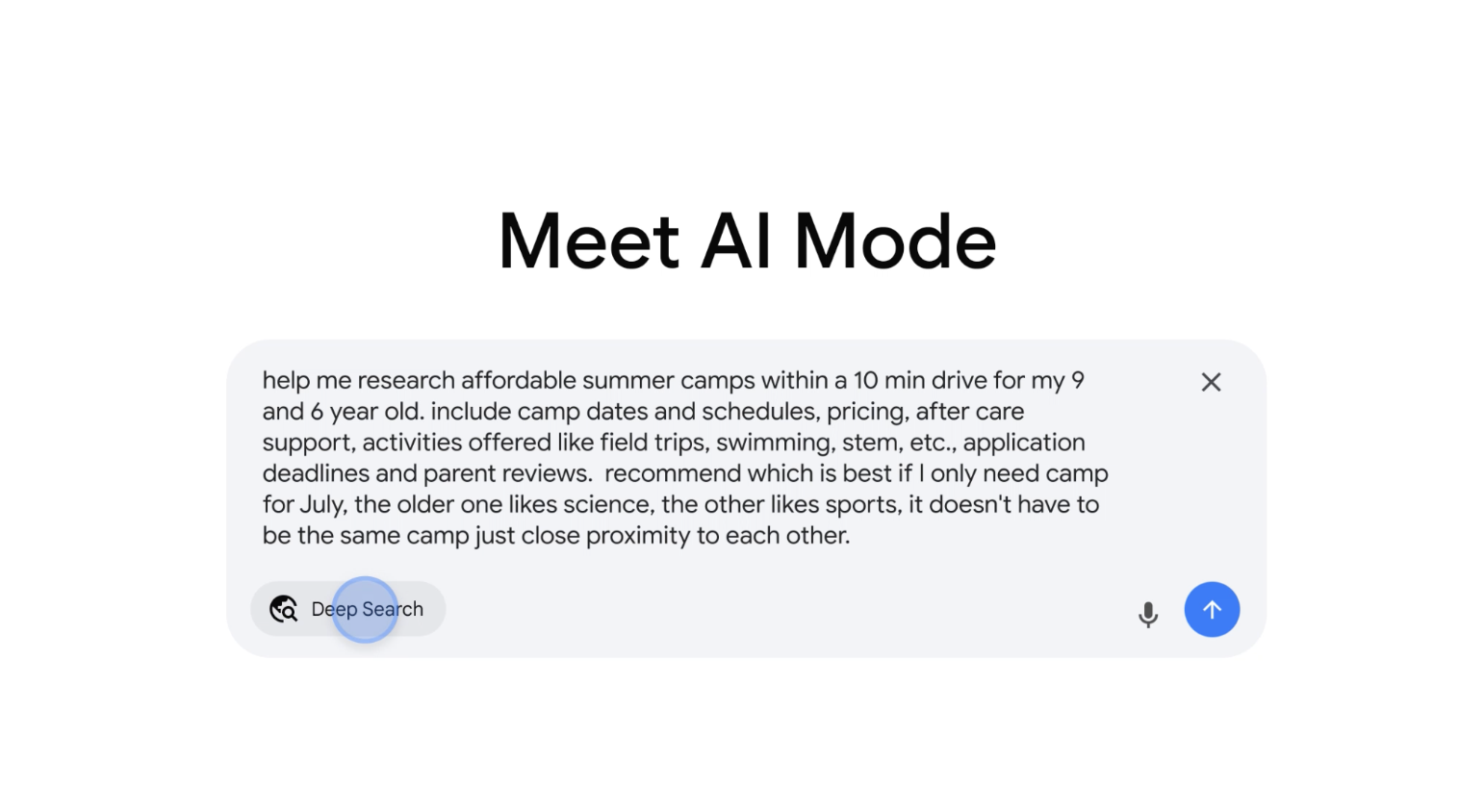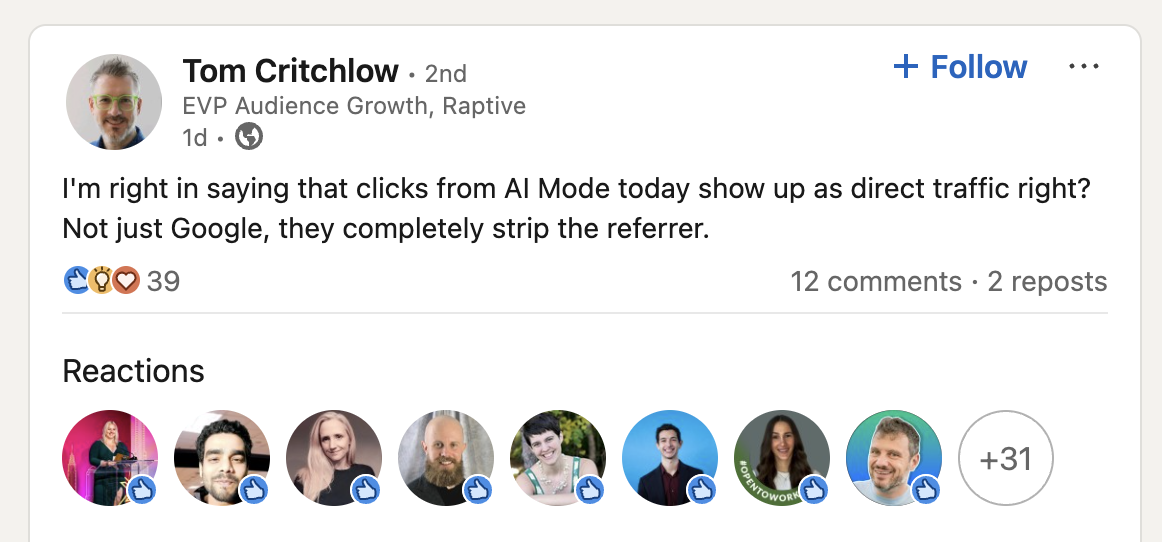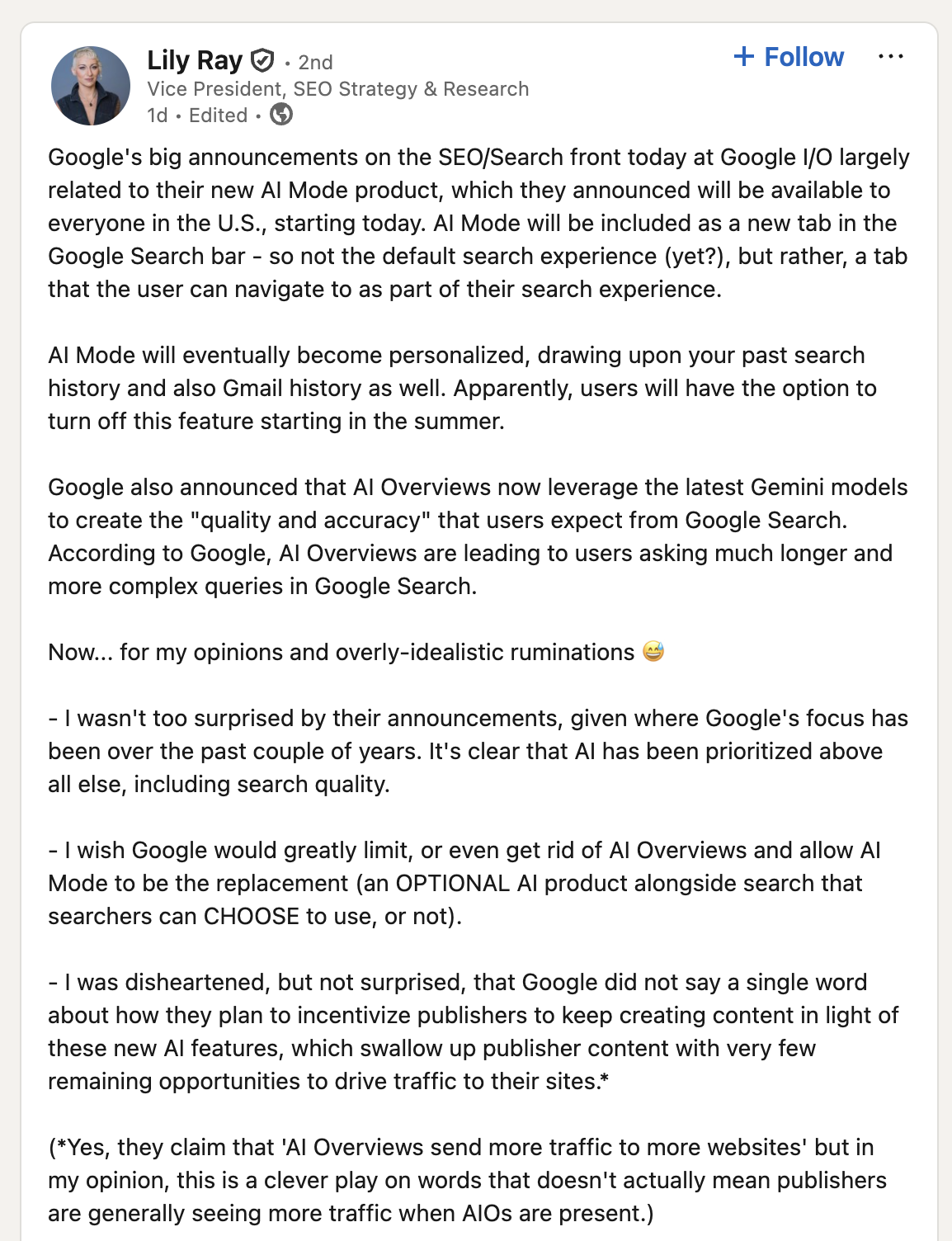Google launched its new AI Mode for U.S. users on May 20, which positions generative AI at the literal top of search results and fundamentally changes how information is surfaced and ranked.
The move, announced at Google I/O, is already sparking concern and debate across the SEO community. Especially as early reports show that tracking clicks specifically from AI Mode isn’t possible.
AI Mode is Google’s latest step in integrating AI into core search functions.
Unlike AI Overviews, which were rolled out last year and offer brief and conversational summaries, AI Mode enables more complex, multi-step interactions directly within the search interface.
Users can now ask longer, more nuanced questions, combine text and images, and even complete tasks like product discovery—all without leaving Google. And soon, users can complete the checkout process directly within the search experience.

The update is going out to users on desktop and mobile in the U.S., with a global expansion planned.
Integral to AI Mode is a “query fan-out” approach that involves Google breaking down questions into subtopics and running multiple searches simultaneously to deliver more comprehensive results.

For marketers and SEOs, the implications are significant. Traditional blue SERP links are being pushed farther down the page, while AI-generated summaries and interactive modules now dominate above-the-fold (ATF) real estate.
Features like “try it on,” which currently requires users to opt in via Search Labs, allow users to visualize products directly from search.

One ambitious feature is Deep Search, designed to tackle complex research tasks. By analyzing hundreds of documents, Deep Search aims to generate expert-level summaries.
This raises questions for SEOs and content creators about how in-depth content will be surfaced, whether sources are properly attributed, and how this feature impacts site traffic.

A big concern right now is visibility and measurement. As reported by Ahrefs, clicks from AI Mode are not currently trackable in Google Search Console or analytics platforms.
Tom Critchlow and other industry experts have confirmed that there is no way to see how much traffic is being driven via AI Mode. This lack of transparency has fueled frustration and uncertainty among site owners and SEOs.

The SEO community has been vocal about the challenges and unknowns surrounding Google’s AI Mode rollout.
Lily Ray highlighted the growing frustration among publishers, noting that many see their content used in AI summaries without gaining expected visibility or traffic.

Aleyda Solis echoed the lack of clarity around how Google's AI Mode chooses which sources to feature, noting that this makes it difficult for SEOs to understand how to optimize their content for visibility in the new AI-driven search landscape.
She emphasized that this uncertainty complicates efforts to effectively target and measure the impact of AI-driven results.
Google is rolling out AI Mode to US users but they’re not sending a referrer value (adding "noreferrer" in the linked URLs), so it will be attributed to "direct" traffic in analytics - This was first noted by @tomcritchlow, and later validated and covered by Patrick Stox, who is… pic.twitter.com/CtHnGBYomF
— Aleyda Solis 🕊️ (@aleyda) May 22, 2025
Google has stated that it will continue refining how sources are credited, yet recent court testimony reported by Bloomberg revealed that Google's standard AI opt-out mechanism does not prevent its search-specific AI products from using web content. Publishers must opt out of search indexing entirely via robots.txt to avoid such use.
To fully block their content from being used in AI Overviews or AI Mode, publishers must remove it entirely from Google Search using robots.txt, which sacrifices all search visibility.
AI Mode is already reshaping the search landscape, but a lot remains unknown. The inability to track clicks or understand how content is surfaced in AI Mode makes it difficult for SEOs to measure performance or adjust strategies.
While Google says organic links remain part of the output, the prominence of AI-generated content may alter user behavior and traffic patterns in ways that are not yet fully understood.
Google’s new documentation emphasizes a shift in how SEO success should be measured. As Aleyda Solis points out, Google is now recommending that SEOs move away from a singular focus on visits and instead prioritize the overall value derived from search traffic, which can be measured through metrics such as conversions and audience engagement.
🤖 New Google Documentation with guidelines for AI search with a final recommendation to stop focusing on visits as a metric 👇
— Aleyda Solis 🕊️ (@aleyda) May 21, 2025
* Focus on unique, valuable content for people: Focus on making unique, non-commodity content that visitors from Search and your own readers will find… pic.twitter.com/qtz3GDUYLm
Google’s advice for ensuring strong performance in AI experiences remains focused on SEO fundamentals: creating unique, valuable content that satisfies both search users and direct readers.
This includes providing a great page experience, ensuring content accessibility, matching structured data to visible content, and incorporating elements like high-quality images and videos.


